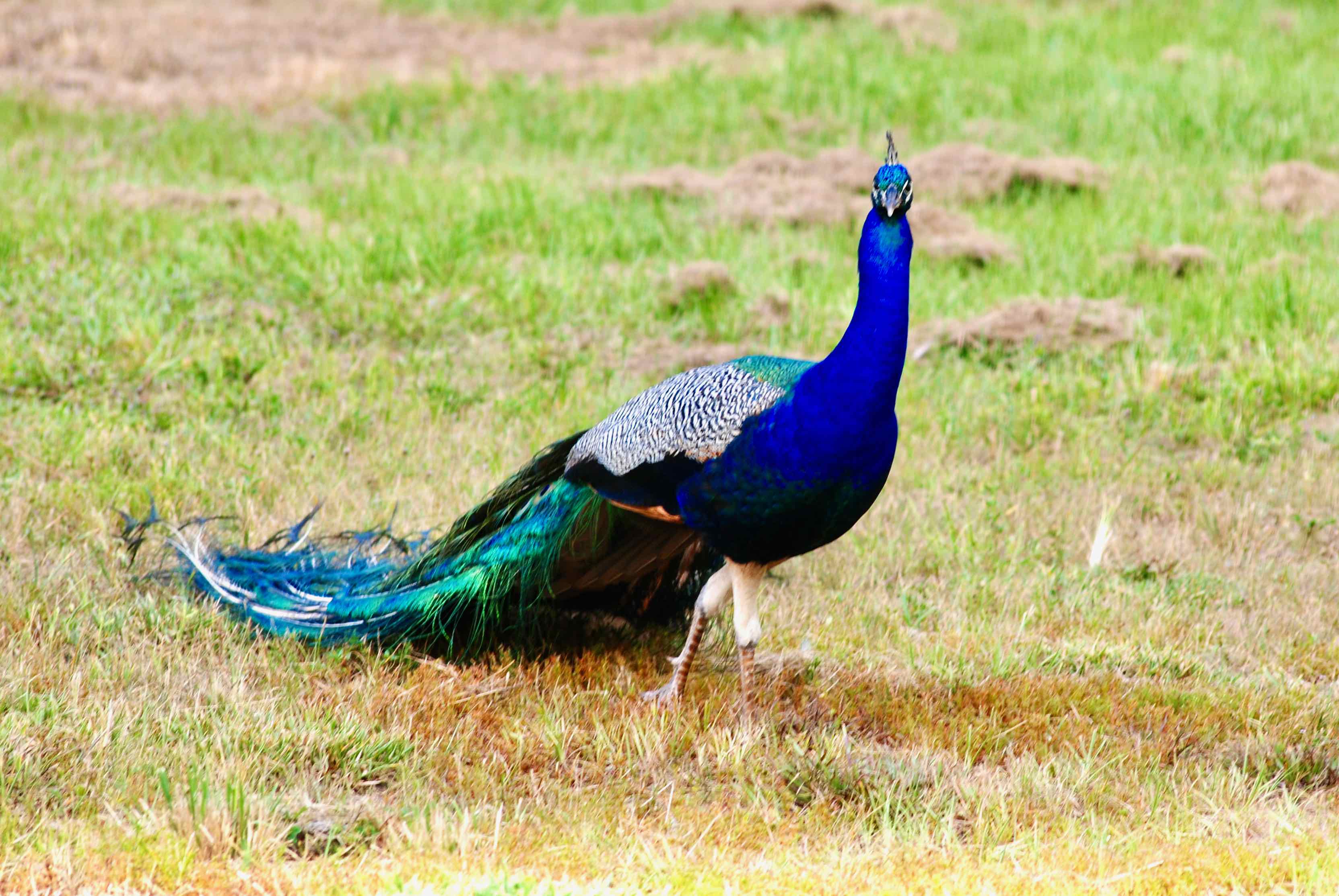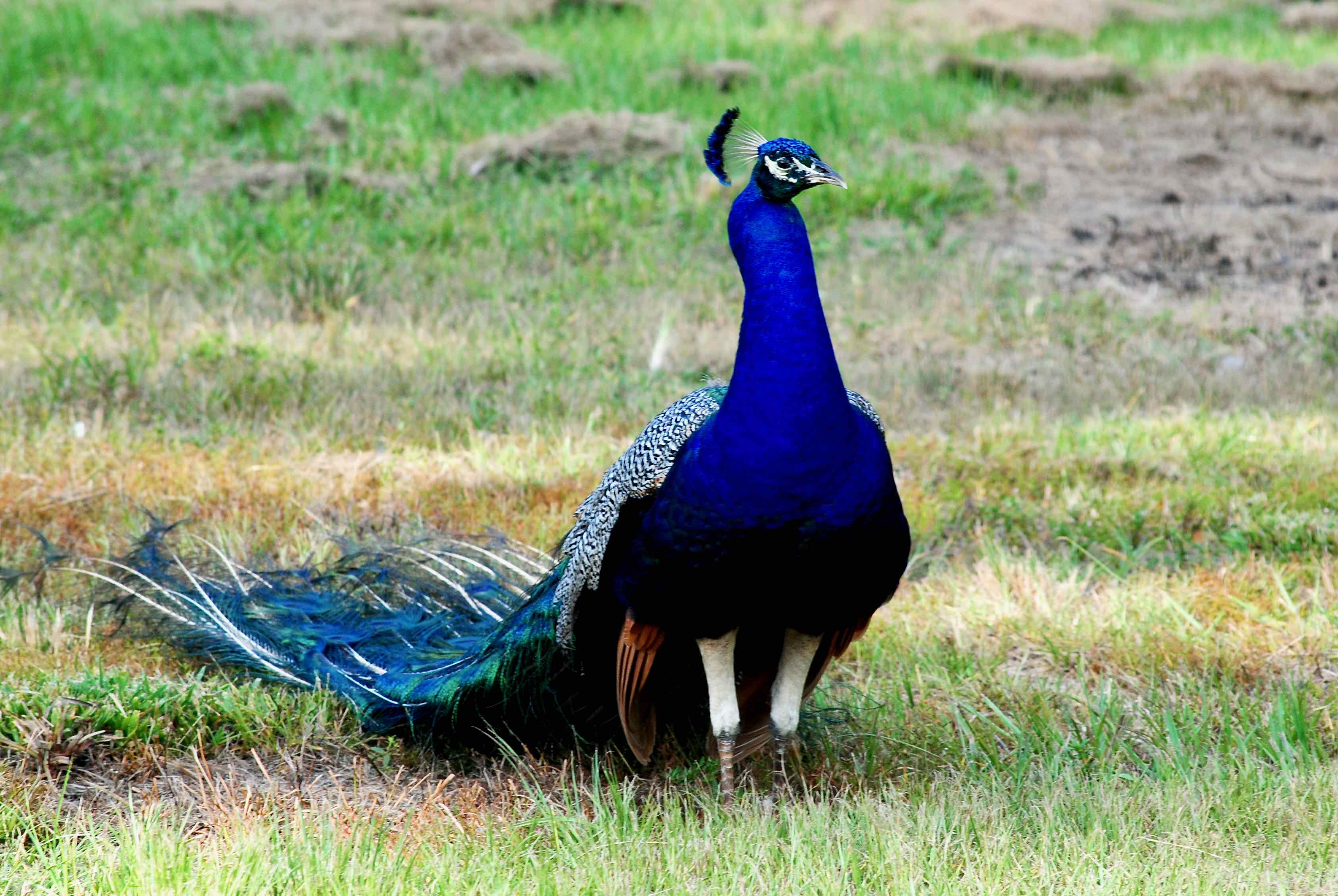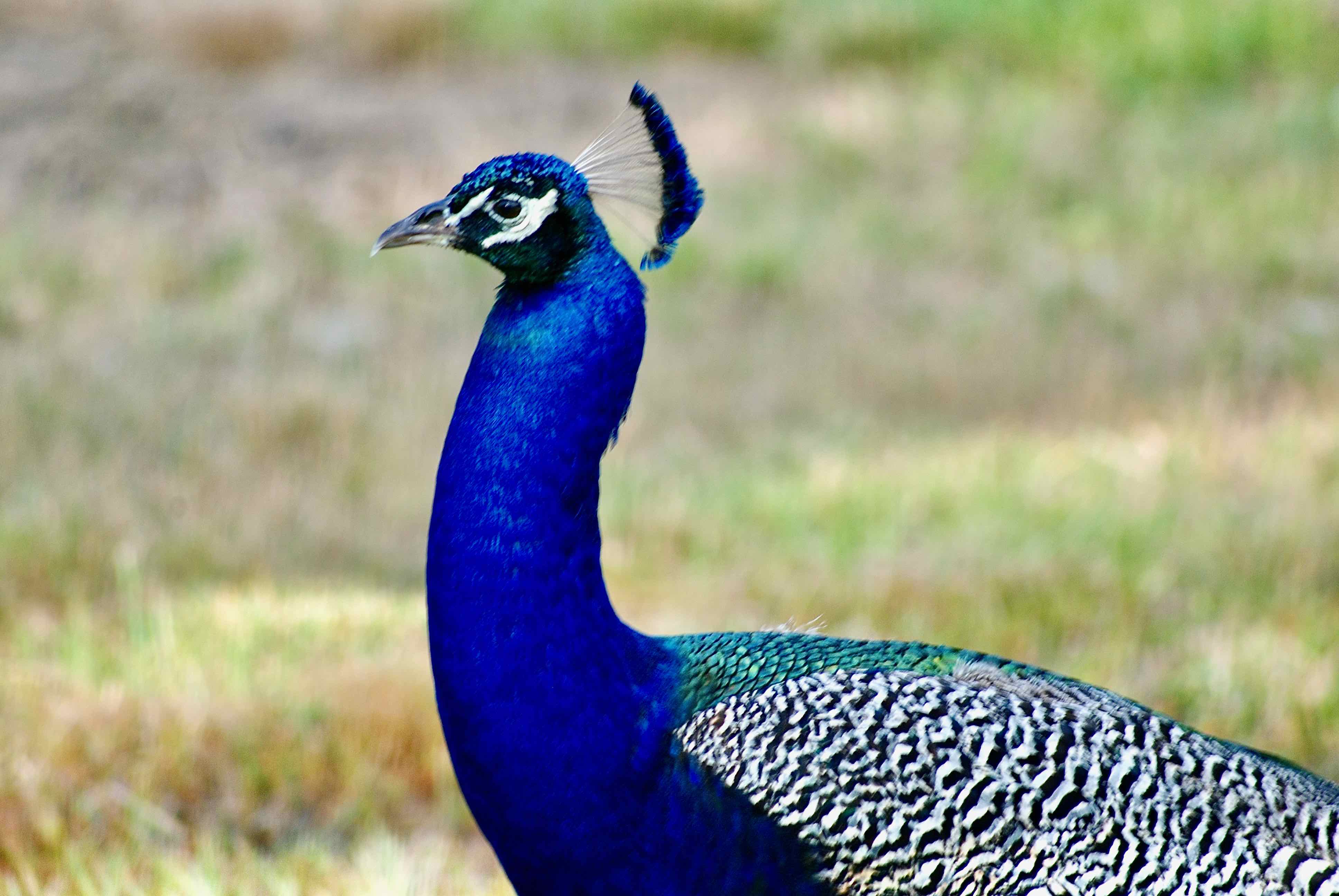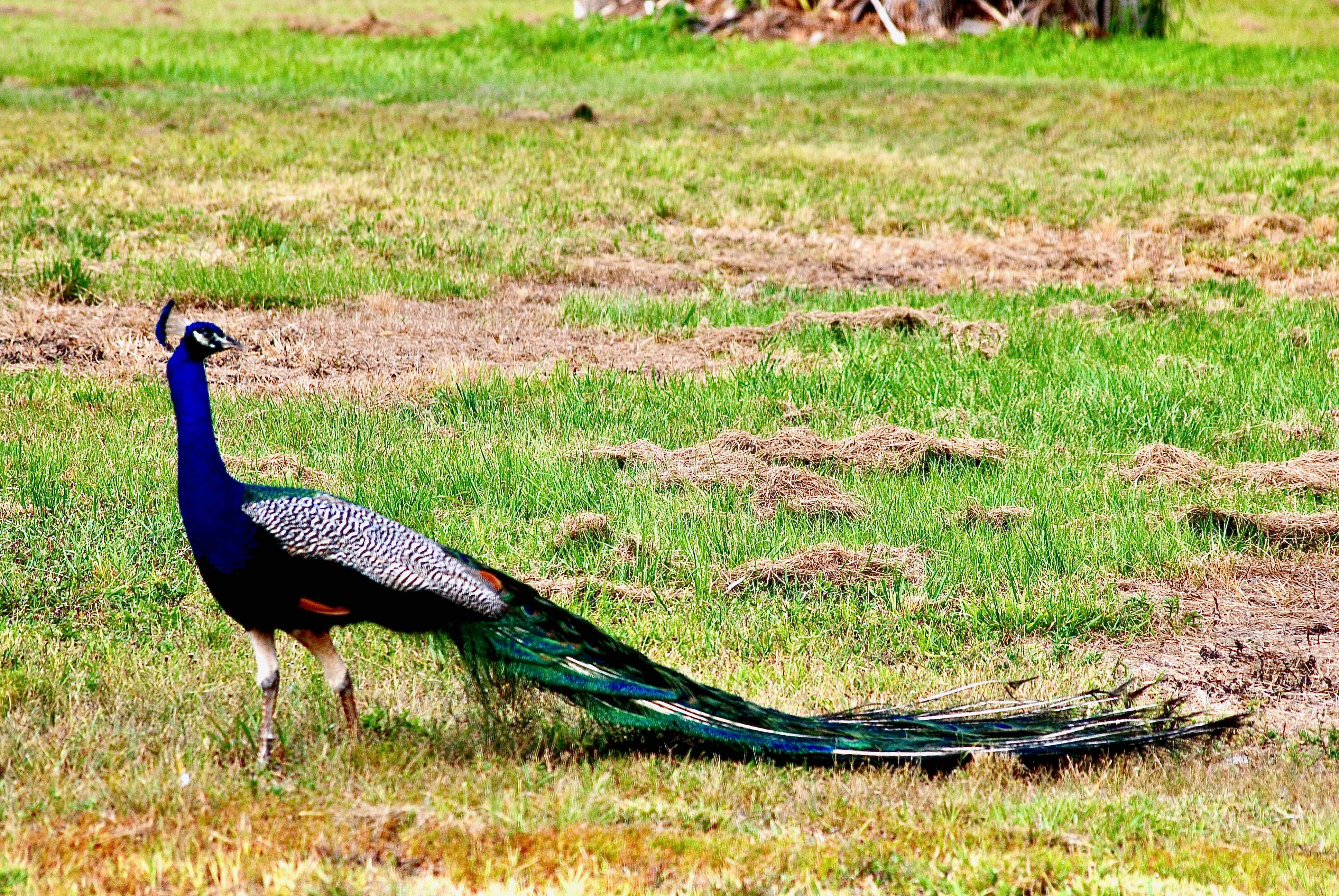
Indian peafowl, photographed at Riverbend Park, Jupiter, Palm Beach County, in July 2012.
There's no shortage of controversial birds in the United States, imported for some seeming benefit, only to cause trouble in some unexpected way. There's the starling, brought here by a Shakespeare enthusiast who thought we needed to have one of every bird the Bard mentioned in his collective works. The starling drives off native birds and eats grain intended to feed cows.
There's the house sparrow, warmly embraced as the solution to an overabundance of insects in towns and cities across the continent — until someone noticed it didn't eat many bugs. And then there's the muscovy duck, introduced to add a splash of color to otherwise drab settings but found to be a threat to native ducks.
But at the top of the list, at least for some, might be this bird, the Indian peafowl, Pavo cristaus. It's prized by many all over the world for its great beauty, but reviled by others for its poor bathroom habits, extremely wide diet that includes cultivated flowers and the fact that it is a very noisy bird. We've seen headlines like "Peacocks terrorize Florida neighborhood," and "Peacock killings, stomping on their heads causes uproar." Fortunately, the peafowl has a limited ranged and doesn't breed very well in the wild.
A few "peacock" basics. The correct term for the bird is peafowl; males are called peacocks, females peahens and the young peachicks. (Peacock is still acceptable for common usage in reference to both sexes.) A flock is called an ostentation, a muster or a party. Until relatively recently, it was known as the common peafowl, but changed to Indian peafowl to recognize its home range, which includes India, Pakistan and Sri Lanka. It is, in fact, India's national bird.
Peafowl began what turned out to be a global trek in the 10th century BC, apparently as gifts of seafaring Phoenicians to King Solomon and the Egyptian pharoahs. The Greeks and Roman fell in love with the bird and took it along as they traveled the Mediterranean. Alexander the Great was so taken with peafowl that he decreed severe penalties to anyone caught harming one. The Romans imported peafowl to Britain in the 4th century AD, and it became a status symbol throughout the empire and later Western Europe into the Middle Ages. One Frances Sinclair took the bird to Hawaii in 1860 and Elias J. "Lucky" Baldwin brought three breeding pairs to his California ranch in 1879, the first of the birds brought to the U.S.
Florida, along with California, are the two states where feral populations of the Indian peafowl are most likely to be found. According to the Florida Fish and Wildlife Conservation Commission, the presence of feral Indian peafowl was first recorded in Orange County in the 1950s, and now they have been seen in at least 20 counties. Generally speaking, feral populations do not sustain themselves and have to be "replenished" either by escapees or deliberate releases. A census conducted by the Florida Fish and Wildlife Conservation Commission done in the late 1980s and early 1990s confirmed that Indian peafowl were successfully breeding in five counties, including Palm Beach, and possibly as many as 10 more. What their status is now is unclear, but they're definitely doing well in Palm Beach County. We've seen musters in Jupiter, Delray Beach and Boynton Beach.
They are large birds, with an overall body length approaching eight feet, including their ungainly looking train, which alone can be four or five feet long in males. Females are less ornately plumed and have much shorter trains. Males use their trains to attract the ladies of the species.
Males are polygamous, and will mate with as many females as they can within their territories, called leks. Females will lay six or seven eggs, which can take four weeks to hatch. The young take seven to nine weeks to mature; males take no part in their rearing. Peafowl reach sexual maturity at two or three years; They are long-lived birds, their lifespans reaching into their 20s.
Food for peafowl is just about anything. They are omnivores, and will eat seeds, grains, berries, insects, small rats, mice, frogs, lizards and snakes. Your flower garden also is on their menu. The Florida Fish and Wildlife folk say the peafowl's impact on the state's environment and native species isn't known, but their eating habits is one of the big reasons they get in trouble with us humans. Even in agricultural areas within India, peafowl are seen as pests.
One thing you'll notice about the Indian peafowl is its well-developed, by bird standards, legs. This bird is built for running. The legs also have a spur on the back, which is used for defense. But despite its appearance, it is an agile bird and able to fly if necessary to avoid predators. It roosts in trees.
Peafowl are highly territorial birds, and often will spend their entire lives within the same area. That trait has made them ideal for domestication. Peafowl are members of Phasianidae, the family of turkies, pheasants, partridges and chickens.
Riverbend County Park



